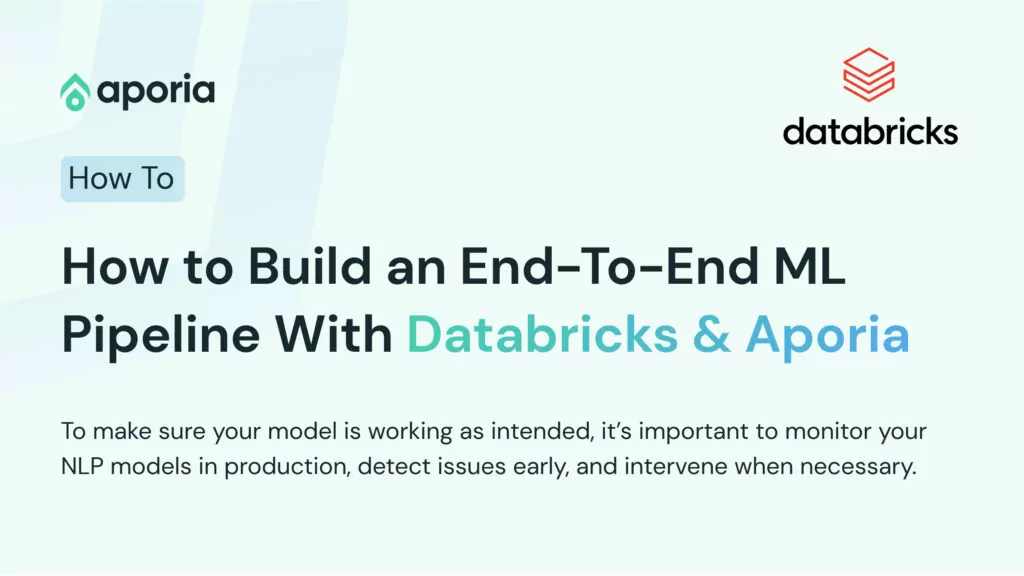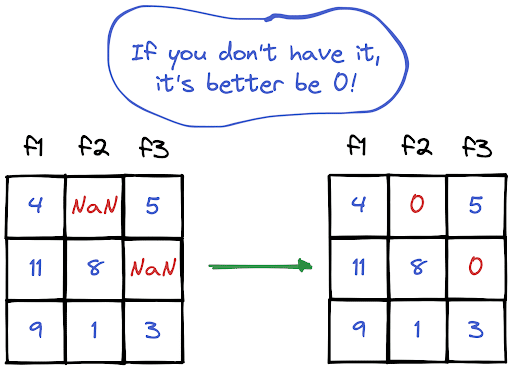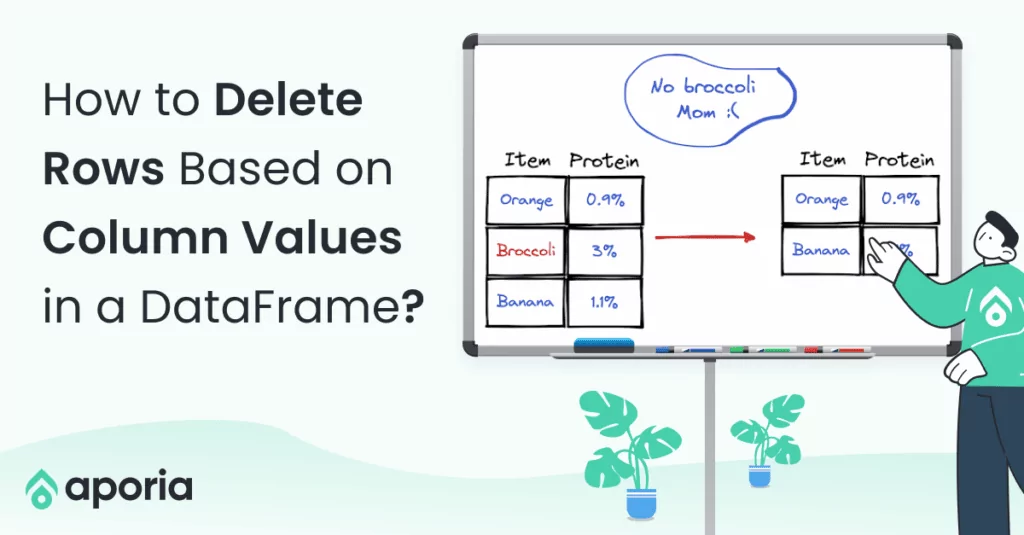
How to Build an End-To-End ML Pipeline With Databricks & Aporia
This tutorial will show you how to build a robust end-to-end ML pipeline with Databricks and Aporia. Here’s what you’ll...
Aporia has been acquired by Coralogix, instantly bringing AI security and reliability to thousands of enterprises | Read the announcement
NaN values are also called missing values and simply indicate the data we do not have. We do not like to have missing values in a dataset but it’s inevitable to have them in some cases. Therefore, we need to learn how to handle them properly.
There are different ways of handling missing values. In this how-to article, we will learn how to replace NaN values by zeros in Pandas and PySpark DataFrames.

The fillna function can be used for replacing missing values. We just need to write the value to be used as the replacement inside the function.
# Replace all missing values in the DataFrame
df = df.fillna(0)
# Replace missing values in a specific column
df["f2"] = df["f2"].fillna(0)We can either use fillna or na.fill function. They are aliases and return the same results.
# Replace all missing values in the DataFrame
df = df.na.fill(0)
# Replace missing values in a specific column
df = df.na.fill(0, subset=["f2"])
This tutorial will show you how to build a robust end-to-end ML pipeline with Databricks and Aporia. Here’s what you’ll...

Dictionary is a built-in data structure of Python, which consists of key-value pairs. In this short how-to article, we will...

A row in a DataFrame can be considered as an observation with several features that are represented by columns. We...

DataFrame is a two-dimensional data structure with labeled rows and columns. Row labels are also known as the index of...
DataFrames are great for data cleaning, analysis, and visualization. However, they cannot be used in storing or transferring data. Once...

In this short how-to article, we will learn how to sort the rows of a DataFrame by the value in...

In a column with categorical or distinct values, it is important to know the number of occurrences of each value....

NaN values are also called missing values and simply indicate the data we do not have. We do not like...